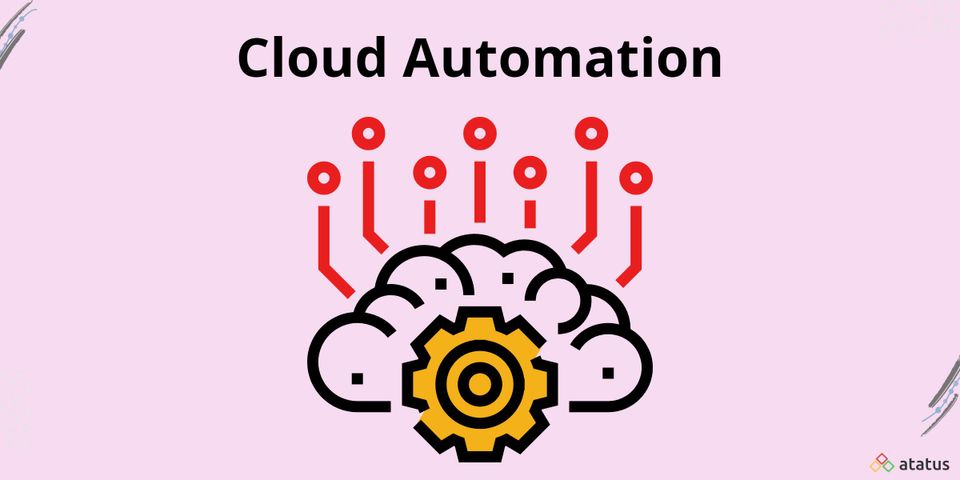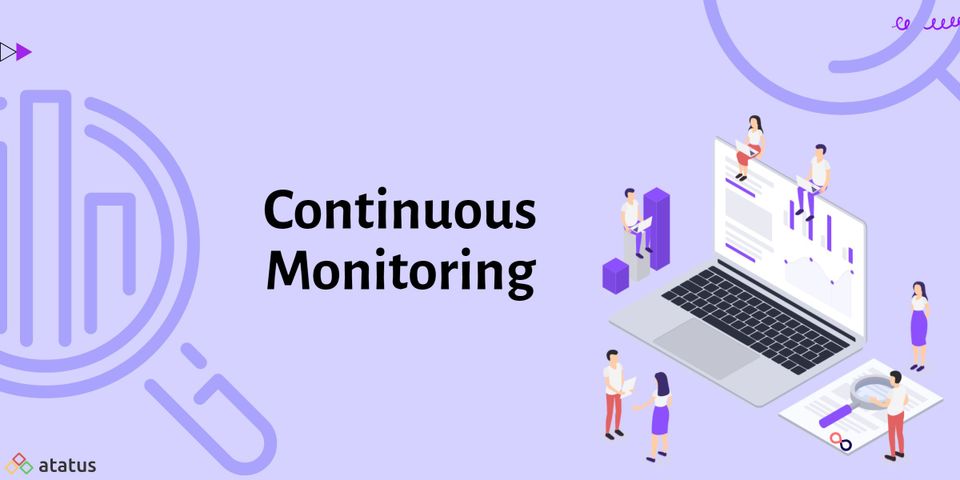When cloud computing first entered the market, no one knew how cloud technology would revolutionize the business sector or what its implications would be. But it grew in popularity over time, and it became evident how it could revolutionize the industry if its impact was seen across organizations. Cloud technology has now become vital in businesses of all sizes, from tiny to large, and usage is on the rise.
Here we will cover the following:
- What is Cloud Automation?
- Why Cloud Automation is Important?
- Use Cases for Cloud Automation
- Benefits of Cloud Automation
- Cloud Automation vs Cloud Orchestration
What is Cloud Automation?
Cloud automation refers to a set of tools and services that businesses employ to automate the time-consuming and tedious process of manually operating cloud components. Because manually maintaining a cloud and cloud workloads diverts an IT team's attention away from more vital, high-value projects, more companies are turning to cloud automation to lighten the burden. Any cloud type, including private, public, hybrid, multi-cloud, and others, can make use of cloud automation.
Software tools that interface with hardware resources make up the majority of cloud automation. The software layer implements policies for allocating and balancing workloads, sustaining operations, and determining which computing nodes to employ based on available hardware. Cloud automation software can provide system administrators with notifications about any faults that may arise, as well as telemetry and system-level information to aid in workload placement and performance optimization decisions.
Why Cloud Automation is Important?
If a developer needed server resources to launch a new application, they would have to go through a series of internal approvals before being granted server time. This may entail delivering an ROI justification to business and financial divisions, many of whom do not share the developer's priorities, as well as specifying comprehensive hardware resource requirements. After obtaining all necessary clearances, a developer must ask an IT department or a systems integrator to configure the hardware for deployment. All of this takes weeks, if not months, and is vulnerable to human mistakes at every step.
When done correctly, cloud automation relies less on people and more on frameworks that automate the provisioning of resources. Provisioning and deployment time is reduced from months to minutes. Cloud automation models are also simple to template and record, allowing you to debug, optimize, and reproduce a successful model multiple times. This is why cloud automation is critical for enhancing agility and lowering operational costs as well as the time it takes to launch new services and applications.
Use Cases for Cloud Automation
Cloud automation may be used to automate a wide range of processes and tasks. Six main use cases are presented here.
#1 Infrastructure Provisioning
The use of cloud automation technologies for infrastructure provisioning is probably the most obvious example of cloud automation. It would take a long time to configure each virtual server manually if you needed to set up a collection of virtual servers. By defining templates that indicate how each virtual server should be configured, cloud automation tools allow you to automate this job. The tools will then apply the configurations for you.
#2 Provisioning and Management of Identities
A single organization may have hundreds of different users in a large-scale cloud system, each requiring a different level of access to the cloud's many services. It would be impossible to set up all of these access policies by hand. It would be even more difficult to keep them up to date as business demands change and users come and leave.
Identity management becomes considerably more efficient with cloud automation. To create user roles in your cloud environment, you can utilize established Identity and Access Management (IAM) templates. To centralize identity management across your entire IT infrastructure, including on-premises resources as well as the cloud, you can combine your cloud IAM framework with a single enterprise directory service.
#3 Application Deployment
When accomplished by hand, application deployment refers to the process of moving a new application release or version from the environment where it was produced and tested to the one where it will run in production.
It's especially inefficient if you follow DevOps and continuous delivery concepts, which may require sending out a dozen or more new releases each week. Cloud automation can assist you by automating the application deployment process.
#4 Monitoring and Remediation
You must monitor and address any issues that may impact application performance after you have established your cloud infrastructure, configured user credentials, and deployed workloads. This is yet another point where automation is quite beneficial.
Most public clouds come with built-in monitoring tools that collect metrics from your cloud environment automatically. They let you set up alerts that will be generated when certain predetermined thresholds are reached, such as when a cloud server runs out of memory or when a cloud database becomes unusable.
#5 Multi-cloud Management
Cloud automation is also becoming more important in multi-cloud architectures, where businesses employ numerous public or private clouds at the same time. In this type of context, cloud automation solutions are critical because they allow teams to deploy workloads to several clouds at once and manage them from a single interface, rather than juggling multiple tools for each of the clouds they use.
#6 Data Discovery and Classification
The automatic discovery and classification of data in the cloud is another use case for cloud automation that is now uncommon but is projected to become more common as more companies face higher compliance requirements from regulations like GDPR.
Benefits of Cloud Automation
Cloud automation has a lot of benefits:
- Time Savings
Cloud automation technologies allow human engineers to focus on other activities that need higher degrees of knowledge and cannot be easily automated by automating time-consuming operations like infrastructure provisioning. - Faster Completion
Tasks can be accomplished more quickly with cloud automation. For example, an IaC application may build up a hundred servers in minutes using predetermined templates, whereas a human engineer could take several days to do the same job. - Lower Risk of Errors
The possibility of human error or oversight almost vanishes when tasks are automated. You will end up with a clean environment if you properly configure the rules and templates that drive your automation. - Enhanced Security
Similarly, cloud automation decreases the possibility of security vulnerabilities as a result of an engineer's error, such as exposing an internal application intended solely for internal use to the public Internet. - Scalability
Any team that works at scale need cloud automation. It may be possible to administer a small cloud system using manual operations, such as one with a few virtual machines and storage buckets. Cloud automation, on the other hand, becomes essential when scaling up to hundreds of server instances, terabytes of data, and thousands of users.
Cloud Automation vs Cloud Orchestration
Understanding the differences between cloud automation and cloud orchestration, as well as the aim of each, is critical to putting in place a system that will increase efficiency.
Cloud automation refers to the use of cloud management tools to complete tasks without the need for human intervention. Cloud automation might do operations like as auto-provisioning servers, backing up data, and identifying and deleting unnecessary processes without requiring real-time human input. Cloud automation improves productivity and reduces manual workload by automating jobs or processes.
Cloud orchestration entails carefully coordinating automated tasks to achieve goals using cloud infrastructure. Cloud orchestration organizes low-level tasks into processes and coordinates them throughout the entire infrastructure, which is often made up of numerous locations or systems.
Cloud orchestration organizes and coordinates those described tasks into a coherent method to achieve intended goals, whereas cloud automation outlines the deployment and management of processes to be automated.
If cloud automation is a puzzle piece, cloud orchestration is the assembly of those components into a finished puzzle. Although cloud automation can happen without cloud orchestration, a well-planned and well-executed cloud deployment combines the two.
Conclusion
Cloud Automation is the only method to keep your organization's innovation engine running by freeing up resources that should be focused on strategic decisions. It is both cost-effective and extremely secure, and it can reduce the manual work that goes into managing and provisioning cloud computing services as a whole. It's up to you to decide how strategically to automate your cloud.
Monitor Your Entire Application with Atatus
Atatus provides a set of performance measurement tools to monitor and improve the performance of your frontend, backends, logs and infrastructure applications in real-time. Our platform can capture millions of performance data points from your applications, allowing you to quickly resolve issues and ensure digital customer experiences.

Atatus can be beneficial to your business, which provides a comprehensive view of your application, including how it works, where performance bottlenecks exist, which users are most impacted, and which errors break your code for your frontend, backend, and infrastructure.





